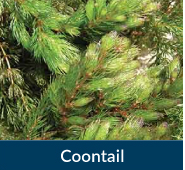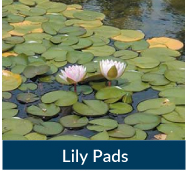What types of weeds do we have in the lake?
We have Curly leaf and Asian Water Milfoil both invasive species which we currently treat. We also have Pondweed, Coontail, Bass weed, which is also called Large leaf, Hydrilla and Water Chestnut. We have at least 4 different types of Lillies around the lake as well. Those are the main weeds in our lake.
We currently specifically pay to treat Asian Water Milfoil and the Curly Leaf, and this year we may be adding the pond weed to the plan.
The algae treatments are done on a call out as needed and cost approximately $2500/ treatment.







What are some of the special challenges for our lake?
Years like 2023 and now unfortunately again in 2024 with little to no ice on the lake the weeds will grow early and strong. This is an issue throughout the state not just Lake Lackawanna.
Our lake is unusually shallow. The sun hits the ground in much of the lake. To reduce the growth of the weeds, the water has to be 6 feet or deeper so that the sun doesn't penetrate down to the plants and seeds.
The main part of our lake is 6 feet or deeper, so we get less vegetation in that area. The rest of the lake is shallower, so it's a constant and expensive battle to maintain and control the weed growth.
We have other unique challenges. The lake is man made over a 120 years ago. We have very little rock ledge around it, which allows sediment to cover the entire lake bottom causing excessive nutrients for future weed growth. We do have a lot of natural springs around the lake, but not enough to help the weed problem. Our main issue is that the lake is just so shallow.
Other lakes like Cranberry, have the same issues, for example, the back half of Cranberry has the exactly the same weeds we have. The main parts of Cranberry is at least 40 feet deep, so they do not get excessive weed growth in that area, but around the edges where the lake shallows up they have weeds and algae issues just as we do. They have additional challenges since it is state owned lake, they can have problems actually getting somebody to treat if the state does not put money towards assisting with treatment. They have to rely on a volunteer membership as we do.
Lake Mohawk has an advantage because they have a lot of homeowners who are required to pay yearly dues, giving them a much larger amount of money to use. They do have their own unique challenges though. For example, some of their treatments like alum which is very expensive, and is causing problems with structures and boats in the water. They also use a bubbler system which is in constant need of repair and again very expensive to implement and maintain.
Where do the weeds come from?
Some of these weeds have a long extended seed life, so realistically, we'll never get rid of them because they've been embedded for years. Right now, some of the plants we see are seeded from 10-14 years ago.
Weeds can come from boats coming into the lake that aren't cleaned, from birds and ducks traveling from one lake to another and from other lakes and streams that feed into our lake. So, it becomes very difficult to keep the weeds out of the lake. Also when one weed is significantly reduced and other weed will take its place. Really, we just maintain the lake. We really can't get rid of the weeds, or eradicate them. Some weeds are good for the lake and the wildlife within. The invasive weeds are what we look to reduce.
When can we expect weed control treatments to start this year with Lake Management Systems
By law, we can't start treating the lake until after May. We also have to wait for the water temperature to warm up, and the weeds to grow closer to the surface or a specific length for maximum efficiency of the chemical being used. If we don't wait for the right time to treat, then the treatments are not effective, and we just waste money. We are not allowed to treat after mid September either.
Our contract with LMS requires them to inspect the lake once a week during the season, and then to apply treatment as needed. They only treat surface algae when we ask them to.
This year, we're going to talk to LMS about the cost to treat pond weed which generally comes up mid season. Over the last couple of years it has been significantly spreading around to the back of the lake. The Coontail was bad a few years ago and they were able to control it and has not been an issue.
We ask that for 24 hours after treatment, we reduce the amount of boating and speed of boats on the lake. We want to give the treatment chemicals time to do their work and be absorbed into the plants.
All of the treatments used are regulated by NJ DEP, and are very safe for swimmers, boaters, and the fish. They are very mild, mostly organic, and are nothing like the harsher chemicals used decades ago.
We rarely spray treatment chemicals in the swim area. Mainly because it is so close to the spillway and they wash out quickly. If we plan to, we send out notice well in advance to let members know. You may see an airboat in the area and if there is any spray coming from the boat it is just water. They recycle water from the lake to get oxygen levels and temperature as they move through the lake. AGAIN if they are treating that area, notice will be sent out to the beach staff and posted on the bulletin board.
How is the weed harvester used? How often, how much expertise and time does it take, etc.?

We run the harvester from May until September (but not during or after treatments). We are especially busy with it during the hotter summer months, when the algae bloom start coming up from the bottom.
We use all volunteers to run the harvester, and they spend a lot of hours on the lake, and moving the material to the dump site. It takes a bit of training to run it properly, but anyone can learn it. We will offer training in the spring for new operators interested.
The harvester collects and removes both weeds and algae. In addition to saving us money on treatments, the harvester removes bio matter from the lake, which reduces the natural accumulation from weeds, algae, leaves, etc. limiting the nutrients for future growth.
Later this year, we will post a video of the harvester in action, so members can see how it works.
How much do we spend on weed control?
We spend about $21,000 for scheduled treatment, and about $2,000-$2500 for each algae treatment. Last year, we spent $23,000 for treatments, which is significantly less than what we spent in the past without the harvester. We also spent $4,000 for fuel and maintenance for the harvester. Some years in the past we had spent upwards of $35,000 + per year.
What can homeowners do to help?
Homeowners fertilizing their lawns is not good for the lake. If fertilizer is used it is mandatory to use phosphorus free fertilizer. In addition, a low or no nitrogen fertilizer is preferred. Also, outdoor washing of vehicles and houses puts chemicals into the lake. This all is true for houses on the lake, and also homes nearby, like across the road. After rains all chemicals and fertilizers run down the drains and into the lake.
Phosphorous is not good, even though it can naturally occur in the lake. But nitrogen is especially bad for the lake. It’s the chemical that greens up a lawn, and it also feeds the weeds in the lake, which is not what we want.
When LMS comes around in the beginning in the spring, they can see who's fertilizing their lawns, especially after a major rain because they will see a green glow in the water near the drains or the houses with no bulkheads where the chemicals just run into the lake.
If we all work together we can greatly reduce the amount of weeds and chemicals that enter the lake. We will improve the depth by removing plants before they die and sink to the bottom which in turn improves the oxygen in the water and makes the lake healthier for the future.